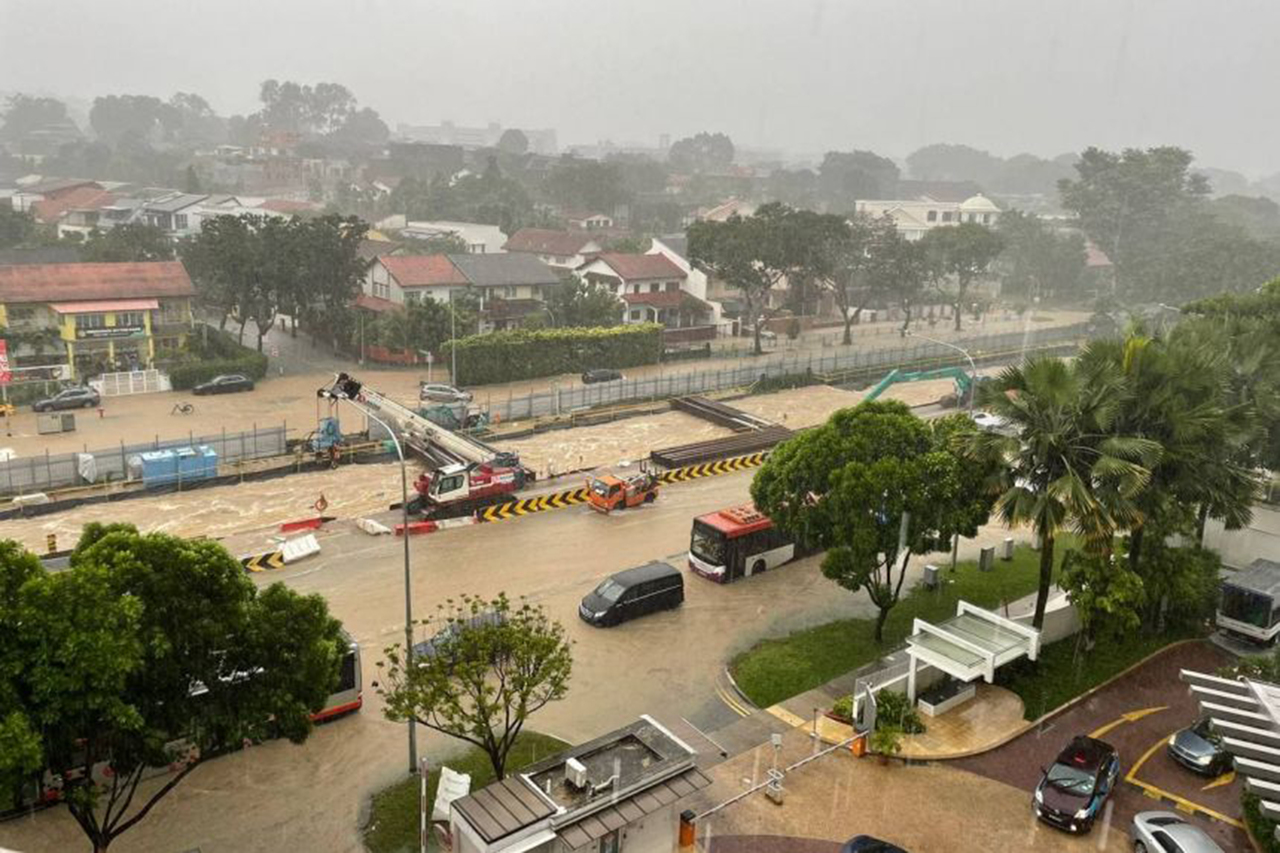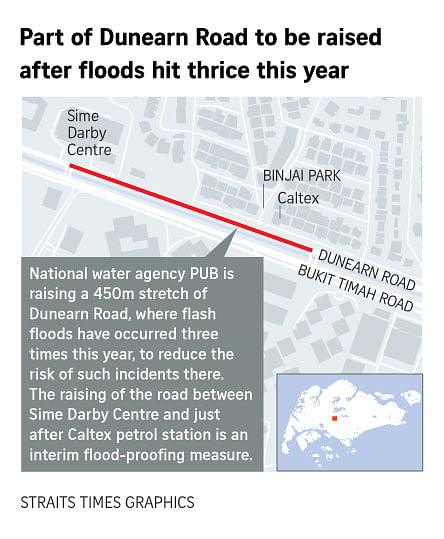Developments in Dunearn Road will still be on higher ground after road-raising: PUB
Sign up now: Get ST's newsletters delivered to your inbox

PUB had said that it will be raising a 450m stretch of Dunearn Road, where flash floods have occurred three times this year.
ST READER: LYDIA LEE
Follow topic:
SINGAPORE - Buildings around flood-prone Dunearn Road will still be on higher ground after a stretch of the road is raised, said national water agency PUB.
"There will be minimal impact on the surrounding developments as their platform levels will still be higher than the raised road level," a PUB spokesman said in response to queries from The Straits Times.
PUB had said last Saturday (Aug 28) that it will be raising a 450m stretch of Dunearn Road, where flash floods have occurred three times this year, to reduce the risk of such incidents there.
The road-raising, which will be completed by November this year, is meant to be an interim measure to relieve the flooding. Drainage expansion works in the area will be completed in 2024.
PUB's announcement had led to chatter on social media, with people wondering if surrounding developments had to do likewise to reduce the risk of water pooling on their premises.
Said the PUB spokesman: "For road-raising works which are typically carried out in tandem with upgrading of drains, PUB will take into consideration the levels of connecting roads and adjacent developments to ensure accessibility is not impacted."
He added that PUB makes an assessment of the measures to be taken at a flood-prone site only after studying the cause of flooding.
The characteristics and profile of the catchment area as well as availability of land will also be taken into consideration.
Asked how much PUB plans to raise Dunearn Road, the spokesman said details are still being worked out.
Mr David Ng, council member at The Institution of Engineers, Singapore, told ST that roads are usually raised by between 10cm and 30cm.
"Topping up of the road usually has to take into consideration many constraints, such as impact on the utilities and underground structures below the road, transition to the connecting roads and access... to the adjacent properties," he said.
Such road-raising works are usually carried out by topping existing roads with aggregate and bituminous material - the same flexible material typically used to pave roads, Mr Ng added.
After gathering information on the vertical alignment of roads in an area, engineers will be able to assess if a particular stretch is lower and at higher risk of experiencing flash floods during bouts of heavy rain.
"Next, they will study how to possibly raise the road level to reduce the depth of flood water to allow vehicles to still pass through," Mr Ng said.
"They also will need to consider other factors such as the surrounding area and connecting roads to ensure that the raised level will not have adverse impact on traffic and public stakeholders."

Overall, the rise in road level will be quite minor as there are many constraints to raising the level of a road, he said.
"So it is unlikely that this will have significant impact on the surrounding areas."
He added that contracted engineers will also study the area carefully before works begin to ensure that establishments next to the road will not have any run-off pooling on their premises.
"(Road-raising) is a common solution employed globally, whereby flood-prone areas are topped up with soil to raise their level above the water level to prevent flooding."

